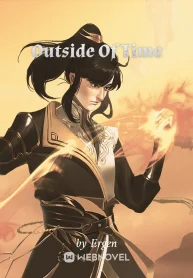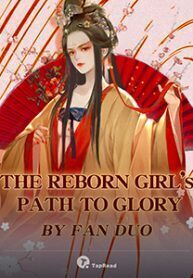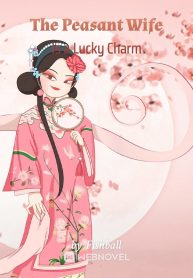Chapter 186: new armor-piercing rounds
Andrei's method has the smallest changes to the structure of the T-72, but at the same time can have the greatest effect. Kartsev decided immediately. After returning, he immediately reported to the General Bureau of Armored Forces and applied for a project to put this reactive armor. Develop it as soon as possible! This Andre, no wonder he climbed to the position of deputy commander at a young age. His brain is really different from that of ordinary people. His ideas are too unique and too correct!
Hearing that Andrei had new ideas, Kartsev immediately took out his notebook and had to memorize it one by one.
Sitting on the back **** of the T-72, Andre said: "Our reactive armor, after it is built, can be spread on the body armor, but the armor on the turret needs to be welded with a frame to let the reactive armor. A bevel is formed on the turret to further increase the ballistic effect."
What Andre said was actually the shape of the tank turret in later generations, like Huaxia's Type 99. After the improvement, additional modules were installed, and it became the shape of a falcon at the front of the turret of the Leopard 2A6. Later generations have a popular name, called bra.
At this time, the Soviet tanks were still cast turrets, which were streamlined and increased the chance of the opponent ricocheting. This is outdated. Placing the armor at an angle can artificially increase the thickness while the weight remains unchanged. Flying, it is not the thickness of the armor, but the diagonal distance.
Kartsev nodded and said yes, this is a good idea!
"Also, our armor-piercing projectiles can further increase the aspect ratio to increase the penetration depth." Andre said: "Our current tank guns are not powerful enough to deal with the new tanks that are about to be finalized and equipped in the West."
Aspect ratio! I don't know what the old men were thinking. I always pay attention to five and three thick, and the same is true for armor-piercing bullets. Look at Lao Maozi's armor-piercing bullets, which are thick and short, and the aspect ratio is about ten, while the western armor-piercing bullets. The aspect ratio is far more than ten. Even twenty, twenty-five, thirty!
Aspect ratio, the ratio of length to diameter, the later Western Dr. Anderson conducted repeated research on armor-piercing projectiles and obtained a simple formula. In addition to the relationship with speed, the most important aspect of armor-piercing depth is this aspect ratio!
And Lao Maozi admits death. Later generations have not changed. The 3BM42 armor-piercing projectiles used by the main T-80U and T-90 main battle tanks belong to the new generation of Russia's main force APFSDS, and the projectiles are still stubby. The vertical armor penetration depth of shooting at a distance of 2000 meters is only 450 mm, which is simply unable to destroy the main armor of Western tanks.
At the same time, Huaxia's 125mm tank gun, although the caliber of the Soviet Union, was developed by absorbing the essence of the Western world. The aspect ratio of the armor-piercing projectile has already reached 25, and the tungsten alloy tail is used to stabilize the shelling armor-piercing projectile. It can penetrate 850 mm of homogeneous armor at a distance of 2000 meters.
(Although there are people who are constantly fooling around, saying that the power of Huaxia's 125mm tank gun is only 450mm, and some even say that it is only 220mm, in pursuit of the power of artillery, it is always facing the rolling guns from the north. In China, the armored torrent, the construction of armored power has always been very important. Although this 125mm tank gun has some origins with the 2A46, the domestic research on the 120mm smoothbore gun has long been carried out. After careful comparison, the choice was made. It has a caliber of 125 mm, and the electroslag remelting steel and the barrel self-tightening technology are all from the West. It can be said that it combines the advantages of the East and the West, plus the enlarged medicine room and the well-designed armor-piercing projectile, Breaking down the main battle tanks of the West is definitely not an empty talk, cheers for our tanks!)
"Increasing the aspect ratio?" Kartsev said. "This would result in our armor-piercing rounds having a longer profile that wouldn't fit into our autoloaders."
"It can be made thinner." Andre said: "Increasing the aspect ratio can either increase the length or reduce the diameter. Using these two methods at the same time is the best compromise. A ratio of twenty-five to one can get the best armor-piercing effect."
"But that would make the armor-piercing projectile less powerful, and it might disintegrate in flight," Kartsev continued.
"Increasing the strength can make the core of the entire armor-piercing projectile use high-strength tungsten alloy." Andre said: "Although it will increase the cost, it is absolutely worth it in terms of relative power. It can also be used outside the armor-piercing projectile. Put another layer of steel jacket on to further increase the strength.”
Now, the 125mm tank gun of the Soviet Union has been in service for nearly ten years. However, the armor-piercing projectiles of the early equipment troops are all powder-condensed piercing rods. Basically, only one armor-piercing head is made of tungsten alloy, and the rear section is still made of steel. , for example, 3BM26 is like this, and with the mass production of T-72, in order to reduce costs, a large number of second-line troops are equipped with cheaper 3BM15 steel armor-piercing bullets, which are completely made of steel and have no tungsten alloy. The export model of the armor-piercing projectile is the famous Iraqi 3BM17 in the Gulf War.
In later generations, the Soviet Union successfully developed the main 3BM42 type tungsten alloy armor-piercing projectile in 1986. This thing is just because the strength is not enough, and a layer of steel jacket is put on the outside of the tungsten alloy.
Andrei's words, every sentence is like an enlightenment, so Kartsev can't help but admire, Andrei is really a genius!
Although the T-72 is a low-end product, we want to pursue the advantage of quantity, but now in the island country, war will start at any time. This kind of local war does not require the Soviet Union to tighten its belt, and Ender The armor-piercing bullet that Lie said can be tested after returning home. If it is true, as he said, increasing the aspect ratio to 25:1 and changing it to a whole tungsten alloy can greatly increase the armor-piercing depth, then Soviet tanks are the nightmare of the Western world!
Reactive armor may take longer, but this armor-piercing projectile can be produced at any time. Split-type shells do not need to be changed, just make a few armor-piercing shells.
"Actually, using depleted uranium to make armor-piercing projectiles is a better material, and it can burn during the armor-piercing process, increasing the effect of armor-piercing." Andre continued.
The Soviet Union has abundant tungsten ore and can smelt a large amount of tungsten alloy. Unlike the West, the West uses depleted uranium armor-piercing projectiles because of the scarcity of tungsten production. However, the power of depleted uranium armor-piercing bullets is indeed more than that of tungsten alloys. Anyway, the Soviets have so many research institutions, maybe they can produce more powerful armor-piercing bullets.
As for what kind of radiation or the like, it was launched on the enemy's territory anyway, and Andre didn't care so much! (To be continued.)
Hearing that Andrei had new ideas, Kartsev immediately took out his notebook and had to memorize it one by one.
Sitting on the back **** of the T-72, Andre said: "Our reactive armor, after it is built, can be spread on the body armor, but the armor on the turret needs to be welded with a frame to let the reactive armor. A bevel is formed on the turret to further increase the ballistic effect."
What Andre said was actually the shape of the tank turret in later generations, like Huaxia's Type 99. After the improvement, additional modules were installed, and it became the shape of a falcon at the front of the turret of the Leopard 2A6. Later generations have a popular name, called bra.
At this time, the Soviet tanks were still cast turrets, which were streamlined and increased the chance of the opponent ricocheting. This is outdated. Placing the armor at an angle can artificially increase the thickness while the weight remains unchanged. Flying, it is not the thickness of the armor, but the diagonal distance.
Kartsev nodded and said yes, this is a good idea!
"Also, our armor-piercing projectiles can further increase the aspect ratio to increase the penetration depth." Andre said: "Our current tank guns are not powerful enough to deal with the new tanks that are about to be finalized and equipped in the West."
Aspect ratio! I don't know what the old men were thinking. I always pay attention to five and three thick, and the same is true for armor-piercing bullets. Look at Lao Maozi's armor-piercing bullets, which are thick and short, and the aspect ratio is about ten, while the western armor-piercing bullets. The aspect ratio is far more than ten. Even twenty, twenty-five, thirty!
Aspect ratio, the ratio of length to diameter, the later Western Dr. Anderson conducted repeated research on armor-piercing projectiles and obtained a simple formula. In addition to the relationship with speed, the most important aspect of armor-piercing depth is this aspect ratio!
And Lao Maozi admits death. Later generations have not changed. The 3BM42 armor-piercing projectiles used by the main T-80U and T-90 main battle tanks belong to the new generation of Russia's main force APFSDS, and the projectiles are still stubby. The vertical armor penetration depth of shooting at a distance of 2000 meters is only 450 mm, which is simply unable to destroy the main armor of Western tanks.
At the same time, Huaxia's 125mm tank gun, although the caliber of the Soviet Union, was developed by absorbing the essence of the Western world. The aspect ratio of the armor-piercing projectile has already reached 25, and the tungsten alloy tail is used to stabilize the shelling armor-piercing projectile. It can penetrate 850 mm of homogeneous armor at a distance of 2000 meters.
(Although there are people who are constantly fooling around, saying that the power of Huaxia's 125mm tank gun is only 450mm, and some even say that it is only 220mm, in pursuit of the power of artillery, it is always facing the rolling guns from the north. In China, the armored torrent, the construction of armored power has always been very important. Although this 125mm tank gun has some origins with the 2A46, the domestic research on the 120mm smoothbore gun has long been carried out. After careful comparison, the choice was made. It has a caliber of 125 mm, and the electroslag remelting steel and the barrel self-tightening technology are all from the West. It can be said that it combines the advantages of the East and the West, plus the enlarged medicine room and the well-designed armor-piercing projectile, Breaking down the main battle tanks of the West is definitely not an empty talk, cheers for our tanks!)
"Increasing the aspect ratio?" Kartsev said. "This would result in our armor-piercing rounds having a longer profile that wouldn't fit into our autoloaders."
"It can be made thinner." Andre said: "Increasing the aspect ratio can either increase the length or reduce the diameter. Using these two methods at the same time is the best compromise. A ratio of twenty-five to one can get the best armor-piercing effect."
"But that would make the armor-piercing projectile less powerful, and it might disintegrate in flight," Kartsev continued.
"Increasing the strength can make the core of the entire armor-piercing projectile use high-strength tungsten alloy." Andre said: "Although it will increase the cost, it is absolutely worth it in terms of relative power. It can also be used outside the armor-piercing projectile. Put another layer of steel jacket on to further increase the strength.”
Now, the 125mm tank gun of the Soviet Union has been in service for nearly ten years. However, the armor-piercing projectiles of the early equipment troops are all powder-condensed piercing rods. Basically, only one armor-piercing head is made of tungsten alloy, and the rear section is still made of steel. , for example, 3BM26 is like this, and with the mass production of T-72, in order to reduce costs, a large number of second-line troops are equipped with cheaper 3BM15 steel armor-piercing bullets, which are completely made of steel and have no tungsten alloy. The export model of the armor-piercing projectile is the famous Iraqi 3BM17 in the Gulf War.
In later generations, the Soviet Union successfully developed the main 3BM42 type tungsten alloy armor-piercing projectile in 1986. This thing is just because the strength is not enough, and a layer of steel jacket is put on the outside of the tungsten alloy.
Andrei's words, every sentence is like an enlightenment, so Kartsev can't help but admire, Andrei is really a genius!
Although the T-72 is a low-end product, we want to pursue the advantage of quantity, but now in the island country, war will start at any time. This kind of local war does not require the Soviet Union to tighten its belt, and Ender The armor-piercing bullet that Lie said can be tested after returning home. If it is true, as he said, increasing the aspect ratio to 25:1 and changing it to a whole tungsten alloy can greatly increase the armor-piercing depth, then Soviet tanks are the nightmare of the Western world!
Reactive armor may take longer, but this armor-piercing projectile can be produced at any time. Split-type shells do not need to be changed, just make a few armor-piercing shells.
"Actually, using depleted uranium to make armor-piercing projectiles is a better material, and it can burn during the armor-piercing process, increasing the effect of armor-piercing." Andre continued.
The Soviet Union has abundant tungsten ore and can smelt a large amount of tungsten alloy. Unlike the West, the West uses depleted uranium armor-piercing projectiles because of the scarcity of tungsten production. However, the power of depleted uranium armor-piercing bullets is indeed more than that of tungsten alloys. Anyway, the Soviets have so many research institutions, maybe they can produce more powerful armor-piercing bullets.
As for what kind of radiation or the like, it was launched on the enemy's territory anyway, and Andre didn't care so much! (To be continued.)







